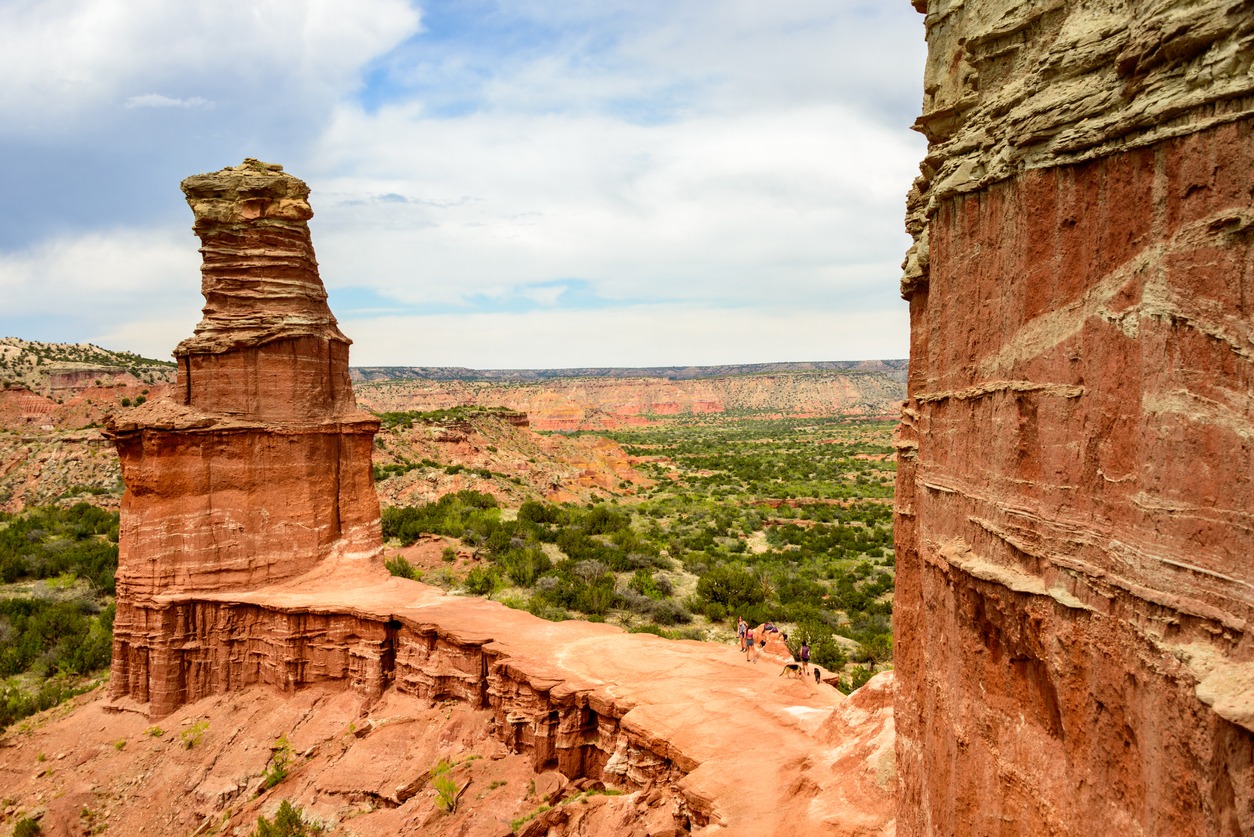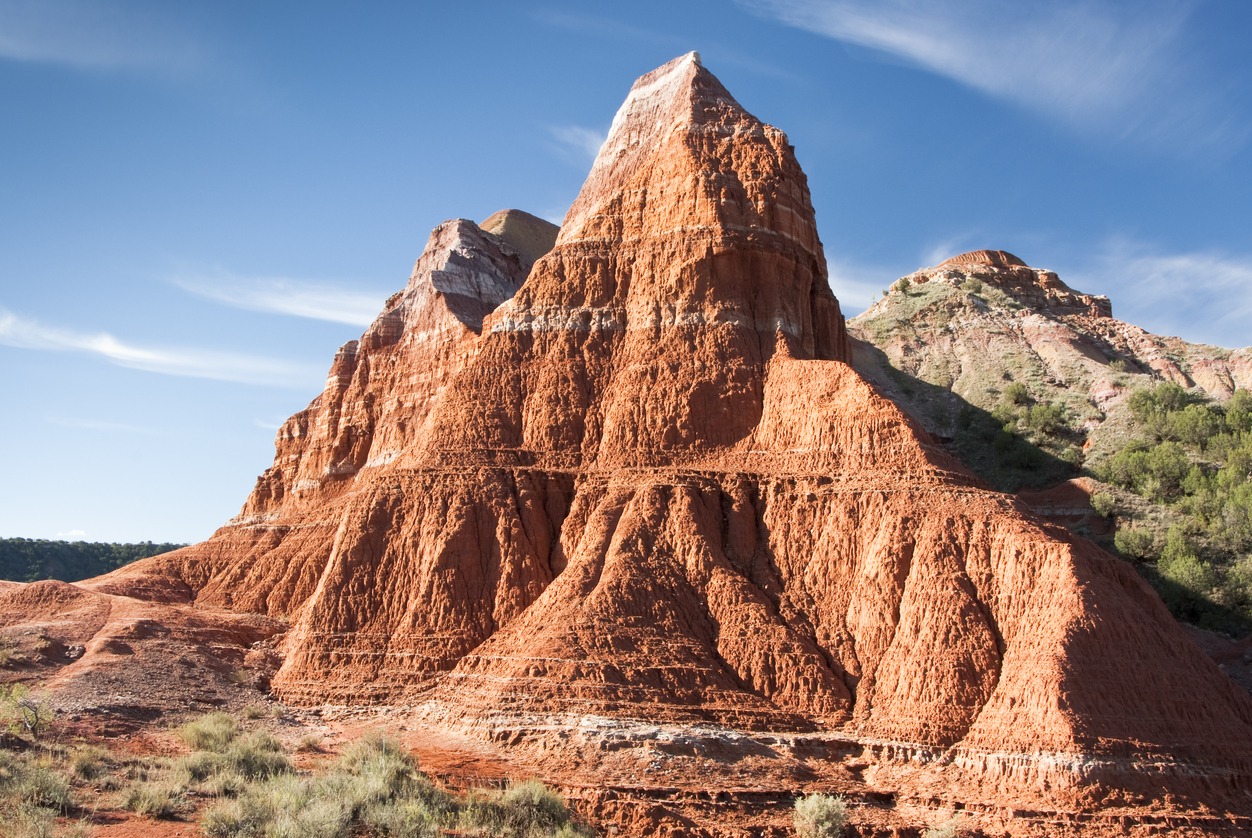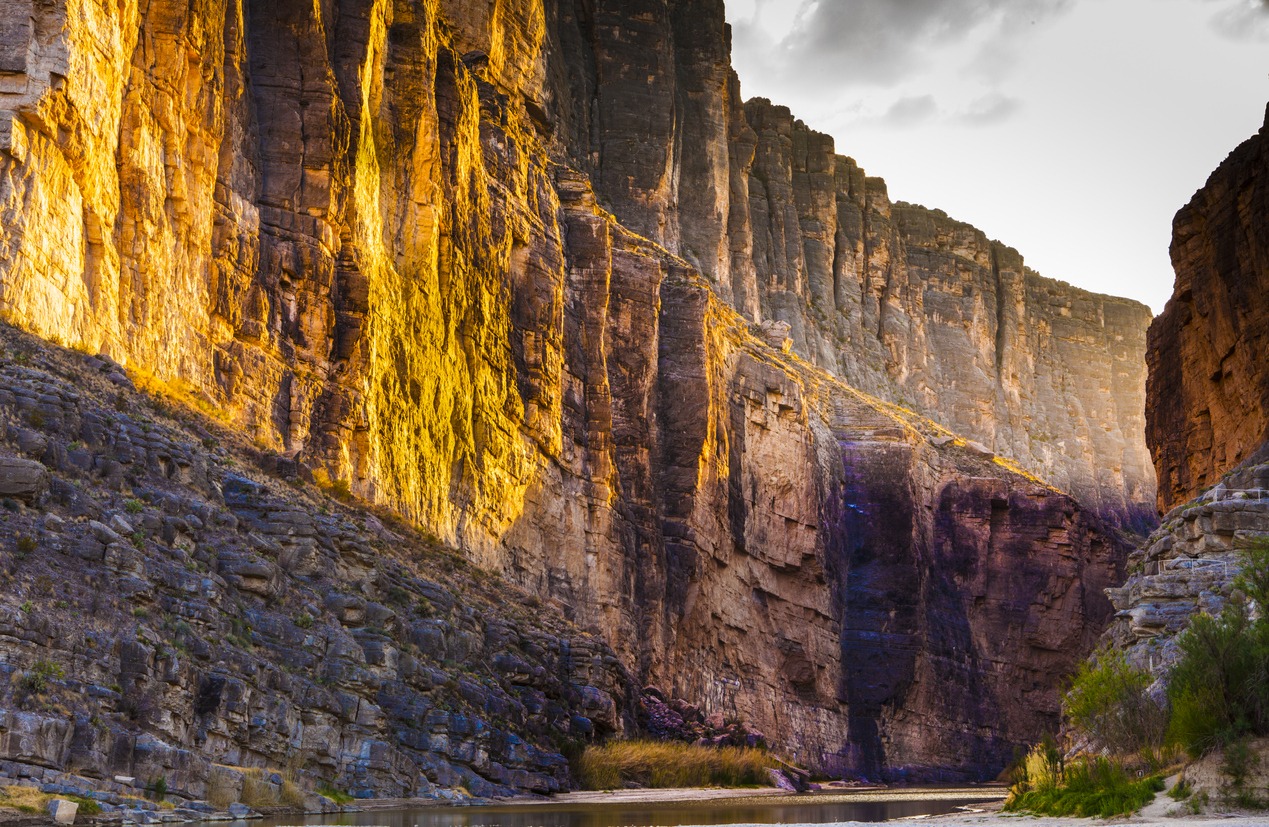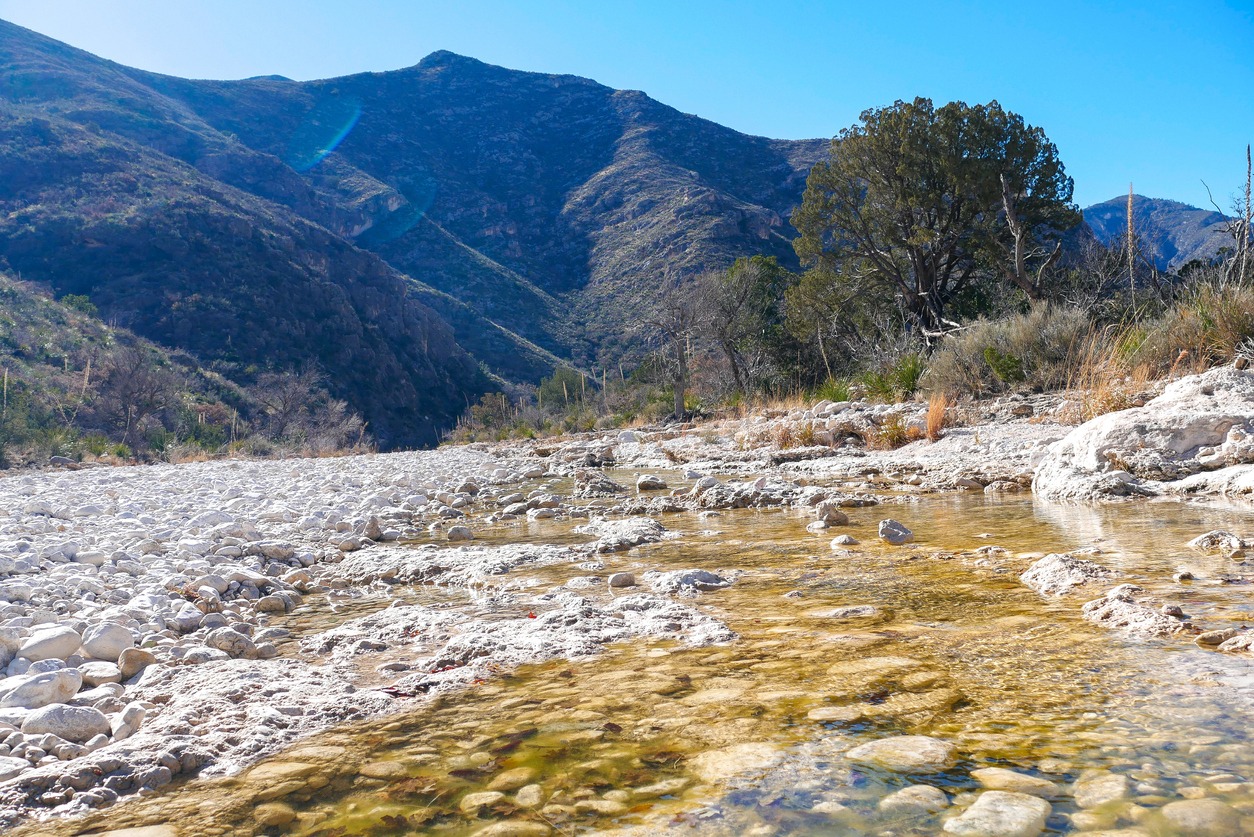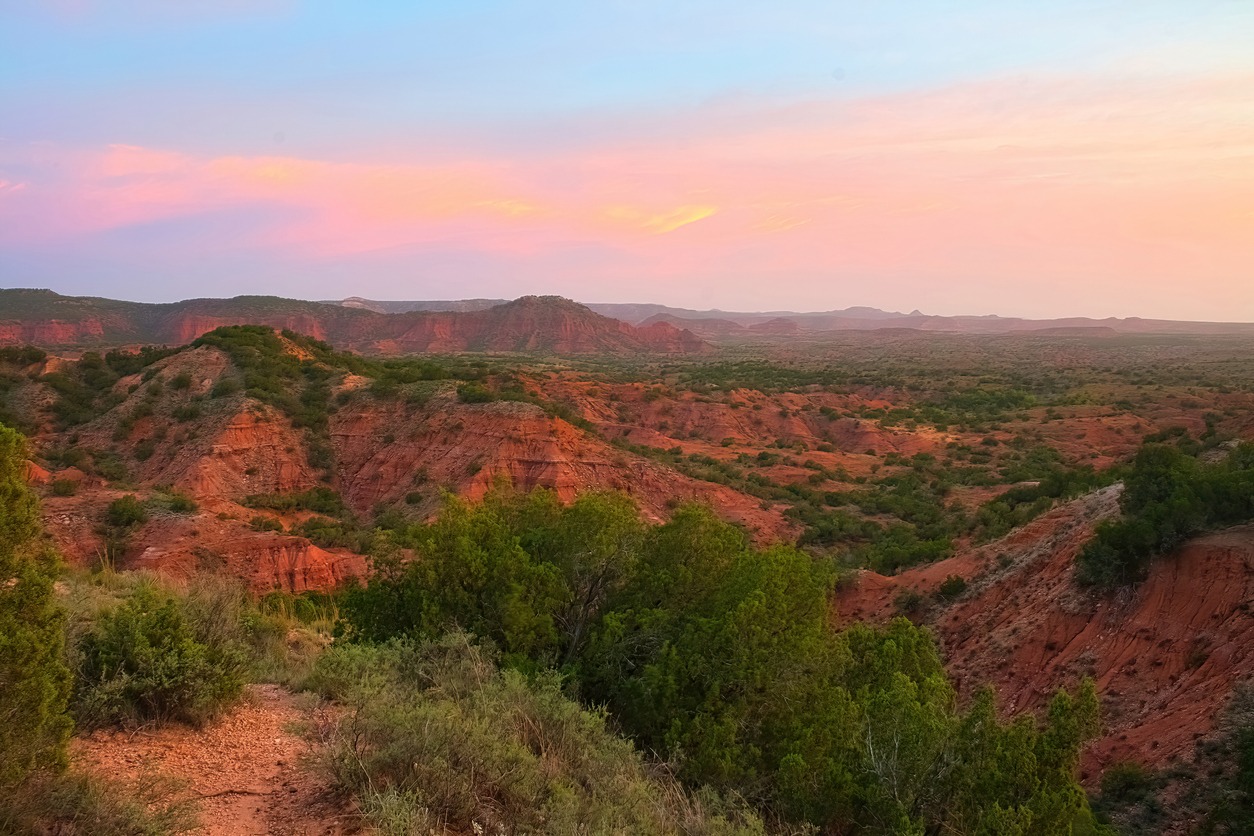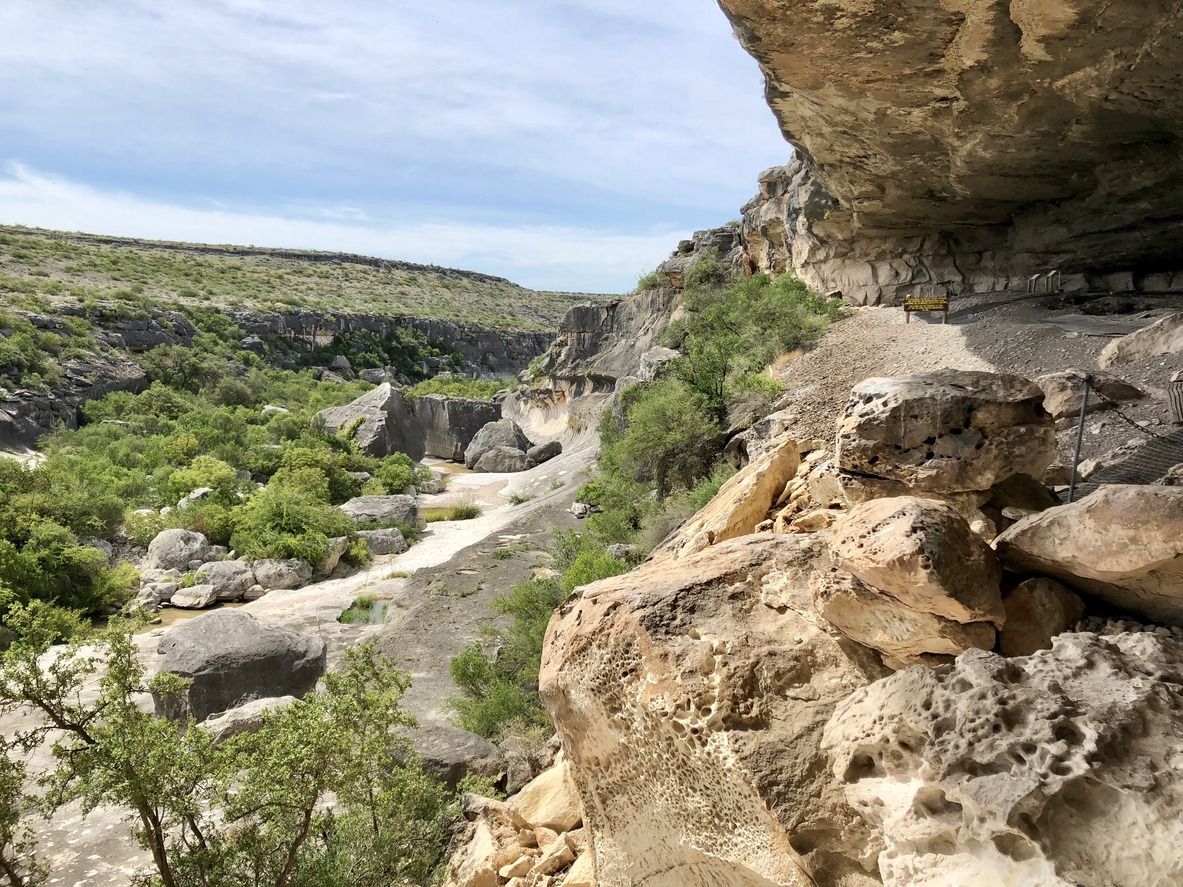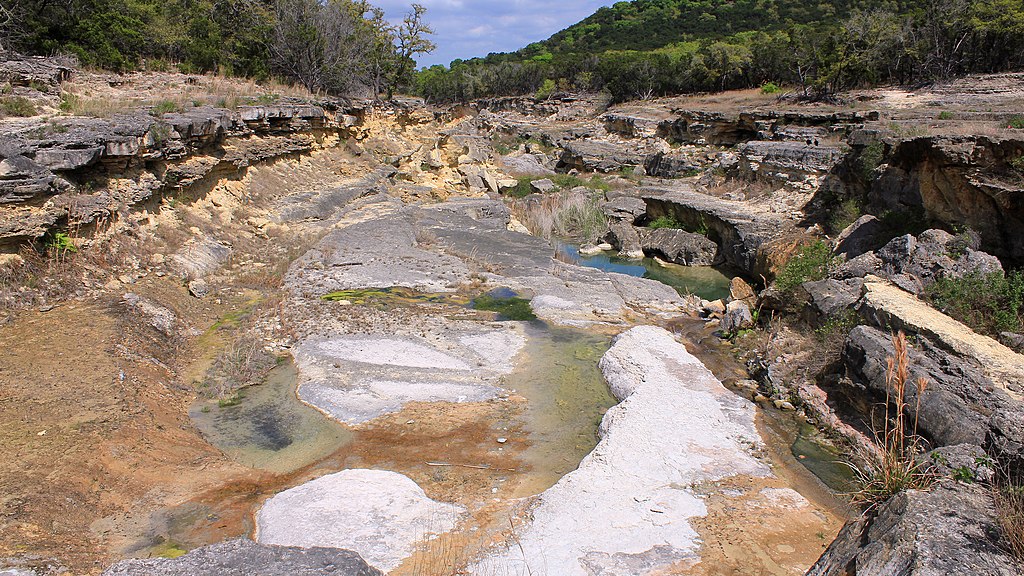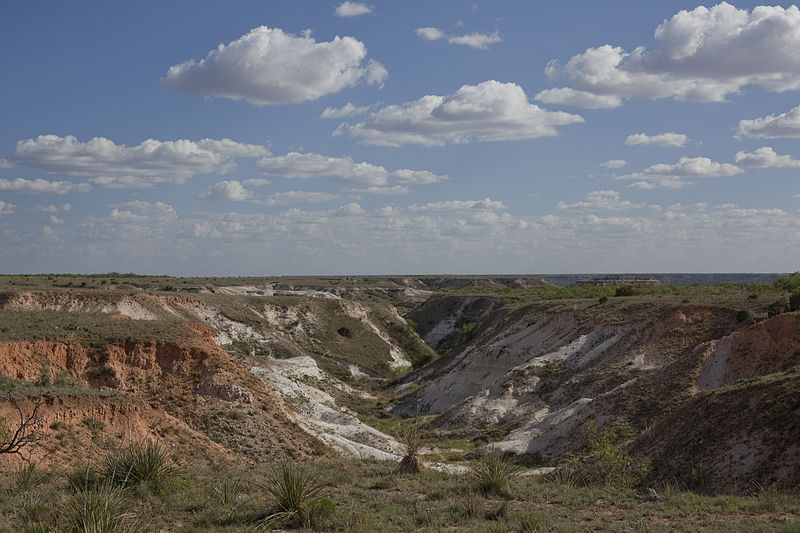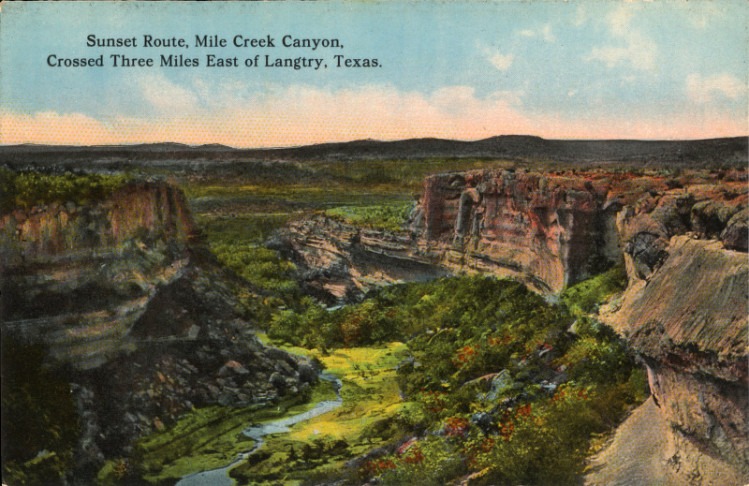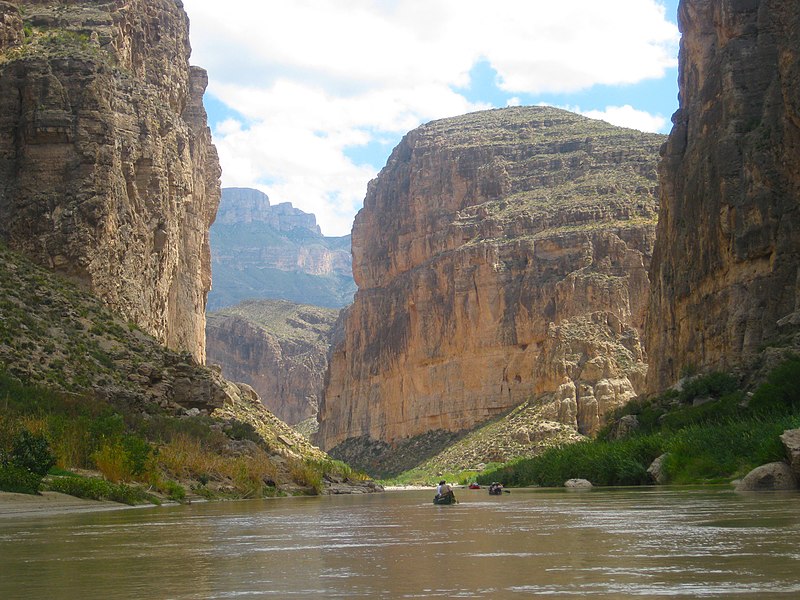When you think of canyons in the United States, iconic locations like Arizona’s Grand Canyon or Utah’s Bryce Canyon may immediately come to mind. While those natural wonders are undeniably breathtaking, the Lone Star State also has a lot to offer in that area. In Texas, you can embark on a fantastic journey through some truly magnificent canyons and gorges. Whether you crave adventurous hikes, picturesque bike trails, serene camping spots, or simply a chance to immerse yourself in stunning landscapes, Texas has it all!
Across this vast state, you’ll encounter cherished and iconic canyons, hidden gems, canyons within National Parks, state park wonders, and even the impressive title of being home to the second-largest canyon in the entire country. Learn all about the major canyons in Texas here!
1. Palo Duro Canyon
Known as the “Grand Canyon of Texas,” Palo Duro Canyon claims its title as the reigning king of canyons in the Lone Star State. Second only to Arizona’s Grand Canyon in size, Palo Duro Canyon boasts a mesmerizing landscape that captivates all who visit. Nestled within Palo Duro Canyon State Park, this striking canyon offers a playground for outdoor enthusiasts, with many hiking trails, exceptional camping spots, and opportunities to witness native wildlife in their natural habitat.
Palo Duro Canyon measures approximately 120 miles long, up to 20 miles wide, and with a maximum depth of over 800 feet. Its red rock scenery exudes timeless beauty, making it a sought-after destination for hikers, campers, and explorers in West Texas.
While there are numerous trails to explore within the park, the iconic Lighthouse Trail stands out as a 5.7-mile roundtrip day hike. This trail leads hikers to a breathtaking red rock formation and offers panoramic vistas that are nothing short of awe-inspiring. Along the way, watch out for native reptiles and deer, adding a touch of wildlife excitement to your adventure. Palo Duro Canyon is found in Canyon, Texas, which is among the lesser-known towns there. Discover more lesser-known locales by reading our article, Have You Explored These Lesser-Known Texan Towns Yet?
2. Santa Elena Canyon
As you venture into the breathtaking expanse of Big Bend National Park, prepare to encounter the grandeur of Santa Elena Canyon – an iconic landmark that epitomizes the raw beauty of this Texas region.
Santa Elena Canyon was formed by the movement along the Terlingua fault, and its river flows through narrow slots with towering cliffs rising up to 1,500 feet above the river. Renowned as one of the finest canyons in the Lone Star State, Santa Elena offers an array of hands-on opportunities for exploration, including hiking and boating.
Accessing Santa Elena Canyon involves a scenic drive on the Ross Maxwell Park road, leading to a majestic encounter with this natural wonder. Once you arrive, the canyon becomes relatively accessible to most visitors, allowing you to experience it on foot or embark on a water-based adventure.
A short stroll from the parking area brings you to the Rio Grande River’s shoreline, and for those seeking more, the Santa Elena Canyon Trail can guide you further into the cliffsides overlooking the gorge carved by the river. The Santa Elena Canyon Trail spans 1.7 miles roundtrip and offers a gravelly path that is relatively flat and easily navigable to the river’s edge. While a short hiking trail leads into the mouth of the canyon, the ultimate way to fully appreciate its grandeur is by rafting or kayaking along the Rio Grande River.
3. McKittrick Canyon
Nestled within the lesser-known Guadalupe Mountains National Park, McKittrick Canyon stands as a hidden gem awaiting exploration. Often overlooked – even by native Texans – this unique canyon offers a surprising array of outdoor wonders.
Guadalupe Mountains National Park boasts its own stunning offerings for outdoor enthusiasts. This park is a treasure trove of adventure, from challenging hikes like the state high point trail to Guadalupe Peak to historical landmarks and the mesmerizing Devil’s Hall slot canyon hike. And nestled within its borders lies McKittrick Canyon, an excellent choice for a fulfilling day hike or a breathtaking overnight backpacking experience for the more adventurous.
McKittrick Canyon offers a variety of trails catering to all skill levels, from easy strolls to challenging treks with over 2,000 feet in elevation gain. Whether you opt for a day hike to immerse yourself in McKittrick Canyon’s enchanting beauty or embark on a more extended backcountry adventure, this scenic canyon promises an unforgettable experience.
What sets McKittrick Canyon apart from other canyons in Texas is its surprisingly lush vegetation, a rare sight in the high desert region. In autumn, the canyon comes alive with a burst of colors, showcasing brilliant reds, subtle yellows, and deep browns, earning it a coveted spot among the best fall hikes in Texas year after year. As you hike through the canyon, you’ll encounter numerous stream crossings, hidden alcoves, and caves, all surrounded by a surprising amount of dappled shade spots along the way. The presence of Texas mangroves adds to the allure of this desert oasis.
4. Caprock Canyon
Nestled alongside its more famous neighbor, Palo Duro Canyon, Caprock Canyon stands as a hidden gem, quietly claiming its spot among the top canyons in Texas. While not as vast in size or as widely recognized, locals often declare Caprock Canyon as their favorite, albeit with a gentle plea to keep its allure a well-kept secret!
At the heart of this captivating canyon lies Caprock Canyon State Park, a sanctuary that fully embraces the rugged beauty of its red rock terrain. Since its opening in 1982, Caprock Canyon State Park has preserved its pristine 15,314-acre expanse, proudly ranking as the third-largest state park in Texas. Within its borders lies a treasure trove of natural wonders waiting to be explored and cherished.
Caprock Canyon State Park exudes tranquility and serenity, making it a major attraction for nature lovers seeking a peaceful retreat. With 90 miles of hiking and mountain biking trails, encounters with free-roaming bison, prairie dogs, deer, and roadrunners are common. The park’s hiking trails offer various perspectives, tracing along the canyon’s rim or delving into its depths, allowing visitors to appreciate its splendor from multiple angles. You can also visit Lake Theo within the park for no-wake boating, swimming, and fishing. Caprock Canyon generously invites you to experience its unique charm in diverse ways.
5. Seminole Canyon
Amidst the remote and vast expanse of the far southwest region lies Seminole Canyon, a lesser-known canyon that is no less worthy of admiration. Visiting this secluded canyon demands commitment – you will need to traverse through the rugged borderlands with Mexico –but the rewards are undoubtedly worth it.
Seminole Canyon shares a remarkable similarity with its sister canyon, Santa Elena Canyon, in Big Bend: the highlight is the awe-inspiring Rio Grande River. While Santa Elena Canyon offers limited views from above, Seminole Canyon delights visitors with abundant panoramic vistas!
Hiking trails within Seminole Canyon State Park will lead you through the seemingly shrub-laden Chihuahuan desert until, suddenly, sweeping overlooks of the Rio Grande River reveal themselves from above. You can appreciate the river’s beauty from ground level, but viewing it from above as it winds for miles through rugged canyon walls offers a whole new perspective.
In addition to its scenic grandeur, Seminole Canyon boasts another captivating surprise – ancient cave art. Guided tours offer a rare opportunity to get up close to these remarkable sights, allowing you to connect with the rich history and heritage of the region. The Seminole Canyon State Park and Historic Site provides opportunities for camping, biking, bird watching, and backpacking and invites archeological study, making it an ideal destination for history enthusiasts and nature lovers alike.
6. Canyon Lake Gorge
Canyon Lake Gorge is a new gorge – it’s only two decades old! Nestled in Canyon Lake, Texas, this captivating gorge unfolds a modern geological tale. In the summer of 2002, an astonishing 34 inches of rain poured over the upper watershed of the Guadalupe River, causing a massive flood and triggering the outflow of water from Canyon Lake. As the flood raged through the Hill Country northwest of New Braunfels, it unleashed its force, tearing away soil and etched a mile-long gorge. The flood uprooted massive trees and reshaped the Canyon Lake landscape forever. For the first time since its completion in 1964, Canyon Lake experienced water cascading over its spillway.
This geological marvel serves as a textbook example of Hill Country geology, showcasing the exposed Trinity Aquifer with its visible faults, fractures, and seeps in the limestone. Layers of limestone, remnants of an ancient sea, lay bare, inviting visitors to marvel at the captivating waterfalls and springs that reveal the wonders of the aquifer. It even unveiled an extraordinary find – ancient cretaceous limestones and fossils, and even dinosaur tracks preserved in ancient mud, dated back over 100 million years.
A visit to Canyon Lake Gorge offers an exceptional opportunity to delve into the mysteries of the past and appreciate the extraordinary forces that shape our world. It’s essential to get on guided tours to explore the hiking trail fully.
7. Blanco Canyon
Blanco Canyon is one of the many canyons carved by rivers into the eastern face of the Llano Estacado, including Palo Duro Canyon, Tule Canyon, and Yellow House Canyon – showcasing nature’s magnificent artistry etched into the Texas landscape.
Stretching across an impressive 34 miles, Blanco Canyon gradually widens from its origins in southwestern Floyd County to an astonishing 10 miles across at its mouth in southeastern Crosby County. As it winds its way in a southeasterly direction, the canyon’s depths shift from a modest 50 feet at the beginning to a striking 300 to 500 feet at its expansive mouth.
This natural wonder offers a mesmerizing display of geological formations and breathtaking landscapes, inviting visitors to marvel at its grandeur. One side canyon, the 5-mile-long Crawfish Canyon, was carved by Crawfish Creek as it feeds into the White River from the west. This side canyon enhances the scenic beauty of the area.
8. Eagle Nest Canyon (Mile Canyon)
Eagle Nest Canyon, formerly known as Mile Canyon, is a tributary canyon of the Rio Grande that gracefully joins the river on its north side. This one-mile-long canyon earned its original name due to its length. Still, recently, it has come to be known as Eagle Nest Canyon, named after a majestic nesting pair of golden eagles observed in the vicinity. Over the past century, it has been an important area for many archaeological and geological expeditions.
The canyon’s unique geology and rich archaeological significance add to its allure, making it a prime destination for those eager to connect with the past and appreciate the captivating beauty of the region. These ventures have delved into the canyon depths, unearthing an extraordinary legacy left behind by Native Americans who called this place home up to an astounding 13,500 years ago. The natural shelters found within the canyon have served as havens for these ancient communities, leaving behind a rich tapestry of history and heritage for modern explorers to uncover.
9. Boquillas Canyon
Boquillas Canyon proudly stands as the longest and deepest canyon in Big Bend National Park. With a vertical relief of over 7,000 feet from nearby Pico del Carmen to the river level, Boquillas Canyon boasts a depth that even rivals the renowned Grand Canyon of the Colorado River.
To witness the breathtaking entrance to the canyon, a 1.4-mile round trip hike from the water’s edge at the entrance to the canyon. The journey starts along the Boquillas Canyon road and branches off from the main road to Rio Grande Village, conveniently leading explorers to this natural wonder.
Boquillas Canyon is easy to navigate and accessible for exploration, which is a unique feat due to Big Bend’s rugged terrain. However, traversing the 33-mile stretch from Rio Grande Village to Heath Canyon is a true wilderness expedition. The river’s calm waters for most of this journey provide a tranquil journey, punctuated by intriguing side canyons and inviting campsites along the way.
While the initial hike offers a taste of the canyon’s splendor, an overnight rafting or kayaking trip is highly recommended to immerse oneself in its grandeur truly. This will also allow you to savor nature’s beauty at a leisurely pace! But to fully embrace the essence of Boquillas Canyon, plan a minimum of three days for the adventure – four days allow ample time for off-river exploration.
Conclusion
The canyons of Texas stand as remarkable wonders, each with its own unique charm and captivating stories to tell. From the towering cliffs of Palo Duro Canyon to the hidden oasis of McKittrick Canyon and the ancient treasures of Eagle Nest Canyon to the majestic majesty of Boquillas Canyon, these natural masterpieces are a testament to nature’s raw power and beauty.
Exploring these canyons offers not only a chance to witness awe-inspiring landscapes but also an opportunity to connect with the rich history and diverse ecosystems that have flourished within them.

